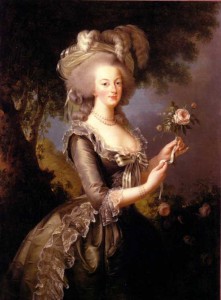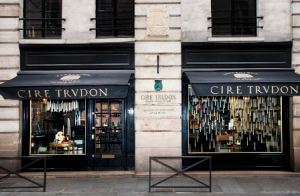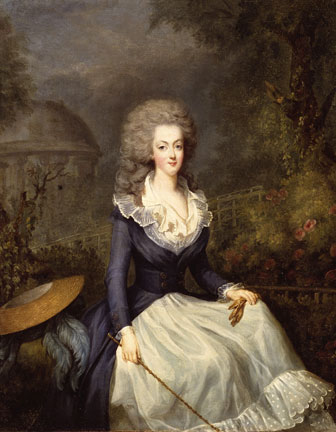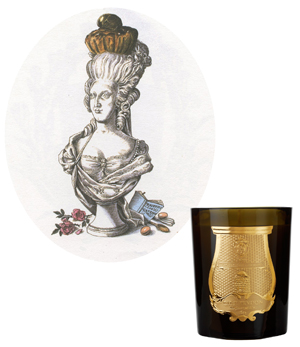Painting by Jean Pierre Houel of siege and fall of the Bastille.
In France the 14th of July is the National Holiday of the Republic, called le 14 Juillet or La Fête Nationale (the name “Bastille Day” is used only in English). On the 14th of July 1789 a Parisian mob took up arms and stormed the Bastille – a prison in Paris. This was more a symbolic gesture of rebelliousness than the actual freeing of prisoners (which were only a total of seven common criminals). This act of defiance against the Monarchy, led to the execution of King Louis XVI and Queen Marie Antoinette, the last King and Queen of France before it became a Republic.
Vigee LeBrun painted over 30 portraits of Marie Antoinette
Marie Antoinette was the most infamous French Queen in history and like most infamous women she was also known for her love of fragrance. In the book, Secret of Scent, Luca Turin claims that it was Marie Antoinette’s perfume, a scent that belonged only to her, that gave her away as she fled the palace in disguise (the House of Lubin takes credit for that perfume) only to be captured and later beheaded in 1793 (Editor's Note: Elisabeth de Feydeau uncovers a unique perspective on the French monarchy by tracing the story of Jean-Louis Fargeon the Queen's perfumer in A Scented Palace: The Secret History of Marie Antoinette’s Perfumer).
"Let them Eat Cake /Qu'ils mangent de la brioche," is commonly misattributed to Marie Antoinette, supposedly when she was told that the peasants of France had no bread to eat. But in the spirit of this quote, if there was no light for the lower classes she would then have proclaimed "Let them light Cire Trudon Candles."
Cire Trudon is the oldest candlemaker in France, established in 1643
By the 18th Century candles became a luxury product for the rich rather than just a source of light. Whereas for everyday people, they were used for religious ceremonies and important occasions. Affluent families and the noble class used increasingly larger quantities of candles and those produced by the Trudon Company became well known for their very high quality wax. The manufacturing process took the best wax collected from the beehives in the Kingdom using the best treatments: washing in water filtered through gypsum to guarantee its purity, importation of the finest cotton for producing the wicks so as to allow clean and regular burning. Perfect and really white, Trudon candles could burn for a long time, without flickering or producing smoke. They were already the height of luxury. Marie-Antoinette advocated the qualities of Cire Trudon Madeleine candles so much that she even gave them the nickname « La Trudonne »
The Trudon Company would supply the Palace of Versailles until the very end of the Monarchy. The Trudon Company also illuminated the last sad hours of the royal family. During their captivity, Louis XVI and Marie Antoinette continued to use the candles from the royal wax producer. The Trudon blazon and the motto would be hidden to avoid the furies of the Revolution.
The Company weathered the chaos of the French Revolution surviving the tragic events and is considered one of the premier candlemakers centuries later.
Painting:Marie Antoinette in the Trianon Park by Antoine Vestier
The Cire Trudon candle most associated with Marie Antoinette is Trianon, named for her beloved pastoral gardens that were created when she renovated Petit Trianon on the grounds of Versailles. Here she would escape the formalities of the court during her reign. This scent is the epitome of elegance that mixes hyacinth with white flowers and roses in a classical bouquet that evokes summer.
TOP: Galbanum / Cyclamen
HEART: Hyacinth / Tea Rose
BASE: Damask Rose
–Michelyn Camen, Editor-in-Chief
Thanks to the Cire Trudon Store 36 Chiltern Street in London we have one Trianon candle for our draw. To be eligible please leave a comment with what you found interesting about this article and a candle term you learned from reading all about candles on the Cire Trudon site. Draw closes July 16, 2012
We announce the winners only on site and on our Facebook page, so Like Cafleurebon and use our RSS option…or your dream prize will be just spilled perfume.





